
Organized Complexity | The City in Art
by Dr. Mark David Major, AICP, CNU-A
Kathleen Patrick is best known for her late 20th-century urban scenes (usually of Chicago), whether wildly colored, energy filled abstracts or highly imaginative cityscapes. Her work strikes a balance between likeness and abstraction. These highly abstract works often contain some pictorial reference to cities and the cityscapes frequently exhibit whole areas, which read as abstracts. This creates a scale and a continuum of abstraction and representation intrinsic to the works of this artist (Source: Chicago Museum of Contemporary Art). Some examples of these abstract cityscapes are below.

However, for this latest edition of The City in Art series, we have selected a painting by Kathleen Patrick that is not explicitly (at least, according to its title) about the city: In a Mellow Mood – Sax Solo (at the top of the page). It seems entirely appropriate – for an artist who has so often taken the cityscape of Chicago as a subject – that something of the urbane would find its way into her paintings about other subjects. This appears to happen in her painting, In a Mellow Mood – Sax Solo, which manages to capture in an abstract manner the “organized complexity” of the city once described by Jane Jacobs. In jazz, a rhythm and order emerge from what, at first hearing, is a seemingly discordant series of notes. Such as it is in the city, too. Patrick’s painting could easily be an impressionistic rendering from above of bodies in motion over time through an urban space or even a notional urban pattern. At first glance, it is seemingly chaotic. However, there is an order and a rhythm to be discovered amidst the chaos.
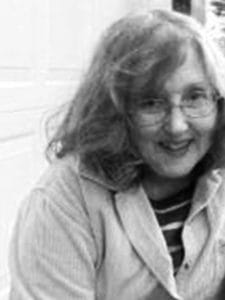 About Kathleen Patrick
About Kathleen Patrick
Kathleen Patrick is a highly collected artist with both corporate and private collectors around the world. She has been represented by several major galleries in Southern California and has exhibited her work in the Chicago area for over ten years. Her works appear in the collections of Gucci, the Bank of America, the University of Illinois and the University of Wisconsin and hang in the Sears Tower, the John Hancock, and many other major buildings in the Chicago area. She includes among her influences the color and freedom of Chagall, the energy and passion of Van Gogh, and the spatial collage of time and space of Picasso (Source: Chicago Museum of Contemporary Art).
The City in Art is a series by The Outlaw Urbanist. The purpose is to present and discuss artistic depictions of the city that can help us, as professionals, learn to better see the city in ways that are invisible to others. Before the 20th century, most artistic representations of the city broadly fell into, more or less, three categories: literalism, pastoral romanticism, and impressionism, or some variation thereof. Generally, these artistic representations of the city lack a certain amount of substantive interest for the modern world. The City in Art series places particular emphasis on art and photography from the dawn of the 20th century to the present day.




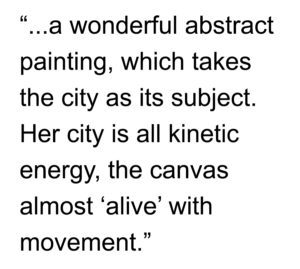 Olga Rozanova’s City (1916) is a wonderful abstract painting, which takes the city as its subject. Her city is all kinetic energy, the canvas almost ‘alive’ with movement. Her painting builds on the Cubist tendency to compress time and space into a single glance at a subject, which conveys a plenitude of information to the viewer. This, in itself, builds on the earlier Impressionist technique, which included movement as a crucial element of human perception and experience in the painting. However, in the case of Cubism, it is not the movement of human perception that depicted in the painting but rather the movement and energy inherent in the subject itself across time and space, which is both compressed and captured in the representation. Olga Rozanova’s City is a brilliant look at
Olga Rozanova’s City (1916) is a wonderful abstract painting, which takes the city as its subject. Her city is all kinetic energy, the canvas almost ‘alive’ with movement. Her painting builds on the Cubist tendency to compress time and space into a single glance at a subject, which conveys a plenitude of information to the viewer. This, in itself, builds on the earlier Impressionist technique, which included movement as a crucial element of human perception and experience in the painting. However, in the case of Cubism, it is not the movement of human perception that depicted in the painting but rather the movement and energy inherent in the subject itself across time and space, which is both compressed and captured in the representation. Olga Rozanova’s City is a brilliant look at 


 We can say this with some confidence because if you were to remove all of the ‘painted light’ from this painting, only a black canvas would remain. It is this ‘painted light’ that provides a subtle richness and contextual depth to the best of O’Keeffe’s cityscape paintings. Later, we will see more explicit examples in her other paintings, for example in The Shelton with Sunspots (1926). In this sense, the subject is the artifice of form emerging from the arrangement of light. The fact the words ‘Radiator Building’ and ‘New York’ are in the title of the painting is completely inconsequential and accidental to the subject of the piece. It is also misleading on O’Keeffe’s part by naming the painting in this manner. However, this is completely consistent with her tendency to be opaque when it comes to the subject matter of her own paintings. As architects and planners, O’Keeffe’s painting shows us how we can expand our perception of the city beyond the conventional (form) to see its richness in other, more subtle – and, perhaps, richer – ways (light).
We can say this with some confidence because if you were to remove all of the ‘painted light’ from this painting, only a black canvas would remain. It is this ‘painted light’ that provides a subtle richness and contextual depth to the best of O’Keeffe’s cityscape paintings. Later, we will see more explicit examples in her other paintings, for example in The Shelton with Sunspots (1926). In this sense, the subject is the artifice of form emerging from the arrangement of light. The fact the words ‘Radiator Building’ and ‘New York’ are in the title of the painting is completely inconsequential and accidental to the subject of the piece. It is also misleading on O’Keeffe’s part by naming the painting in this manner. However, this is completely consistent with her tendency to be opaque when it comes to the subject matter of her own paintings. As architects and planners, O’Keeffe’s painting shows us how we can expand our perception of the city beyond the conventional (form) to see its richness in other, more subtle – and, perhaps, richer – ways (light).



 is demonstrating the line between individuality and group association, and how it is blurred. All of these men are dressed the same, with the same bodily features and all are floating/falling. This leaves us to look at the men as a group (Source: Wikipedia).
is demonstrating the line between individuality and group association, and how it is blurred. All of these men are dressed the same, with the same bodily features and all are floating/falling. This leaves us to look at the men as a group (Source: Wikipedia).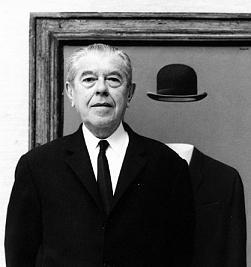 About Rene Magritte
About Rene Magritte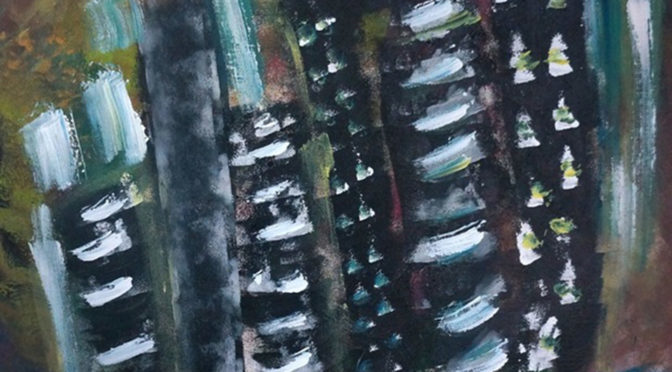
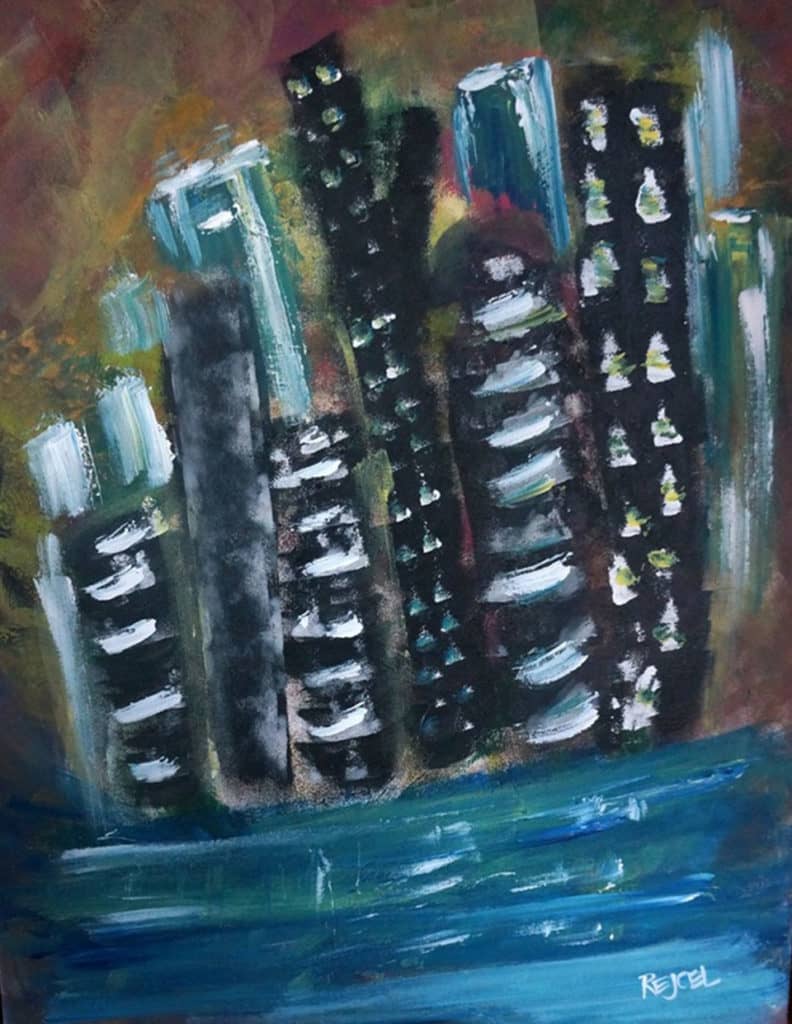
 There is an eternal attribute about the city that Harbert captures in depicting a waterfront city at dusk. The onset of dusk is indicated both by the colors of the painting’s background and the use of white in representing the internal lights of the buildings, much in the same way as Georgia O’Keefe’s Radiator Building-Night, New York (1927). In The Blue City, the lights of the city buildings are abstractly reflected in the water at the base of the painting. There is a vibrancy of color contrasted between the upper (reds, browns, and greens) and lower portions (blues, whites, and greens) of the painting. The Blue City reminds us in an abstracted form that the city is always in motion in every dimension (length, width, breadth – the horizontal and vertical – and time itself). In this sense, Harbert captures something about the eternal dynamic of motion in the city. When it comes to the existential being of the city, we may not see it from afar – for example, as we gaze at the skyline of a city – but motion is an essential fact of the thing itself.
There is an eternal attribute about the city that Harbert captures in depicting a waterfront city at dusk. The onset of dusk is indicated both by the colors of the painting’s background and the use of white in representing the internal lights of the buildings, much in the same way as Georgia O’Keefe’s Radiator Building-Night, New York (1927). In The Blue City, the lights of the city buildings are abstractly reflected in the water at the base of the painting. There is a vibrancy of color contrasted between the upper (reds, browns, and greens) and lower portions (blues, whites, and greens) of the painting. The Blue City reminds us in an abstracted form that the city is always in motion in every dimension (length, width, breadth – the horizontal and vertical – and time itself). In this sense, Harbert captures something about the eternal dynamic of motion in the city. When it comes to the existential being of the city, we may not see it from afar – for example, as we gaze at the skyline of a city – but motion is an essential fact of the thing itself. About Rejcel Harbert
About Rejcel Harbert